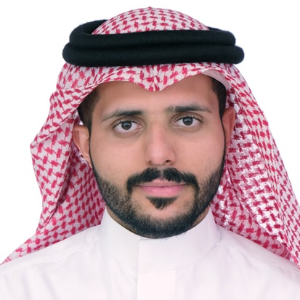Alfonso Recordare, Dell'Angelo Hospital, Italy
Difficult-to-treat infections have led to a renewed interest in phage therapy as adjunct to conventional surgical and antimicrobials treatments. Chronic bone infections are biofilm-related infections difficult to eradicate; in vitro data indicate that phages are active against bi [....] » Read More































































Title : MVA-based virotherapies in the treatment of infectious diseases
Genevieve Inchauspe, ImmunResQ Department, France
A famous milestone in the vaccine field has been the first successful vaccination against smallpox in 1798 by Edward Jenner. Using the vaccinia cowpox virus, Jenner was able to protect vaccinees from variola or smallpox. The Modified Virus Ankara (MVA) poxvirus strain has been on [....] » Read More
Title : The rationale of ethanol inhalation for disinfection of the respiratory tract in SARS-CoV-2-positive asymptomatic subjects
Pietro Salvatori, Private Practice, Italy
The severe Acute Respiratory Syndrome Coronavirus 2 (SARS-CoV-2) pandemic is a major health concern affecting socio-economic lives. As with other highly contagious diseases, it is of utmost importance to identify and treat the healthy carriers or positive asymptomatic subjects (P [....] » Read More
Title : Progression of pneumococcal nasopharynx colonization in relation to the pneumococcal conjugate vaccines in children between the ages of 2 months to 5 years at Boston medical center
Tafaani Khan, Boston Medical Center, United States
The Nasopharyngeal Surveillance Study clinically investigates the progression of Streptococcus Pneumoniae (SP) Naso Pharynx (NP) colonization in relation to the Pneumococcal Conjugate Vaccines, specifically 7-Valent Pneumococcal Conjugate Vaccine, 13-Valent Pneumococcal Conjugate [....] » Read More
Title : Rapid, isothermal detection of Zika virus: a potential alternative to RT-PCR
Rickyle Christopher Balea, The University of the Sunshine Coast, Australia
Zika virus (ZIKV) is a re-emerging flavivirus that poses a significant public health threat. ZIKV exhibits a wide array of non-vector borne human transmission routes, such as sexual transmission, transplacental transmission and blood transfusion. Detection and surveillance of ZIK [....] » Read More
Title : No cold chain molecular workflow for detecting and differentiating plasmodium
Sara Sentre Domingo, CerTest Biotec, Spain
Background Malaria (or paludism), is a mosquito-borne parasitic disease caused by Plasmodium, is a leading cause of death and disease in many developing countries. The objective of this study was to determine the clinical performance of VIASURE Malaria Real Time PCR Detection Ki [....] » Read More
Title : Carriage of neisseria meningitidis among university students living in residential colleges, Dunedin, New Zealand
Susan Jack, University of Otago, New Zealand
Invasive meningococcal disease is a severe disease caused by Neisseria meningitidis that can present as septicaemia or meningitis and may lead to disability or death. Nasopharyngeal carriage of N. meningitidis may occur in up to 15% of the general population with a higher p [....] » Read More
Title : Therapeutic intervention of Bunyavirus induced hemorrhagic fever and cardiopulmonary disease
Mohammad Mir, Western University of Health Sciences, United States
Viruses from different families in the order Bunyavirales contains highly contagious and deadly viruses, having no cure at present. For example, hantaviruses from the family Hantaviridae are negative stranded emerging RNA viruses and category A pathogens that cause serious illnes [....] » Read More
Title : Insecticide resistance and use of household insecticides for personal protection: Insights from vector-borne disease outbreaks
Walter Fabricio Silva Martins, Liverpool School of Tropical Medicine, United Kingdom
Aedes aegypti is the most important vector of at least four fatal and/or debilitating arboviruses (dengue, chikungunya, yellow fever and Zika). Insecticide-based approaches remain the major intervention to minimize vector-borne disease burden across the diseases. In Brazil [....] » Read More
Title : Efficacy and safety of inhalation of nebulized ethanol in covid-19 treatment. A randomized clinical trial
Pietro Salvatori, Private Practice, Italy
Background: This study was designed to evaluate the efficacy and safety of nebulized ethanol (EtOH) in the treatment of COVID-19. Methods: A RCT of 99 symptomatic and RT-PCR-positive patients admitted to a hospital receiving Remdesevir-Dexamethasone was conducted. They were ra [....] » Read More
Title : Spatio-temporal patterns of dengue incidence and their associated factors, Brazil, 2000-2018
Patricia Marques Moralejo Bermudi, University of Sao Paulo, Brazil
Dengue is a neglected tropical disease. This arbovirus is an important public health problem and has a great economic impact, especially in emerging countries. Globally, the incidence of dengue has expanded abruptly in recent decades, potentially associated with climatic factors. [....] » Read More
Title : Molecular screening for intestinal protozoan and fungal pathogens and first subtyping of blastocystis spp. in hemodialysis patients in Slovakia
Elena Hatalova, Pavol Jozef Safarik University, Slovakia (Slovak Republic)
Blastocystis spp., Cryptosporidium spp., Giardia intestinalis and Microsporidia spp. are protozoan and fungal intestinal pathogens in immunocompromised individuals, causing symptomatic or asymptomatic infections, which are usually undiagnosed. Uremia in hemodialysis patients with [....] » Read More
Title : Inhibitory effects of limonene on candida albicans virulence-related traits
Saiema Ahmedi, Jamia Millia Islamia, India
A major global problem is the severe toxicity of conventional antifungal medications and multidrug resistance. Investigation of new substances with outstanding therapeutic potential is necessary. In this work, the antifungal potential of limonene, a secondary metabolite present i [....] » Read More
Title : Onchocerciasis drug development: From pre-clinicals to humans
Adela Ngwewondo, Institute of Medical Research and Medicinal Plants Studies, Cameroon
Twenty diseases are recognized as neglected tropical diseases (NTDs) by World Health Assembly resolutions, including human filarial diseases. The end of NTDs is embedded within the Sustainable Development Goals for 2030, under target 3.3. Onchocerciasis afflicts approximately 20. [....] » Read More
Title : Diagnosis of suspicious skin lesions in mpox times
Sara Sentre Domingo, CerTest Biotec, Spain
Background: The appearance of skin lesions of viral nature can be a symptom of infection or reactivation of the herpes simplex virus type 1 (HSV-1), herpes simplex virus type 2 (HSV-2), varicella zoster virus (VZV), T. pallidum or mpox virus infection. Given the ability of t [....] » Read More
Title : The burden of human parechoviruses on children in oman
Aws Sami Sulaiman Al-Farsi, Sultan Qaboos University, Oman
Objectives To study the burden, clinical and laboratory features and outcome of Human Parechoviruses (HPeVs) infection among children managed at a tertiary hospital in Oman. Methods: This is a retrospective study of children (< 18 years of age) with molecular proven HPeV in [....] » Read More
Title : Clinical evaluation of Mpox virus detection by real time PCR
M Esperanza Teresa-Rodrigo, CerTest Biotec, Spain
Background: In an increasingly globalized and interconnected world, the outbreak of an infectious disease in one country can become a worrying health emergency for the whole world. A recent example is the 2022 Mpox outbreak affecting multiple areas across the world. In this [....] » Read More
Title : Sternal wound infection following open heart surgery: Incidence, risk factor, pathogen, and mortality
Mohsin Khared, King Abdulaziz University, Saudi Arabia
Surgical site infections (SSI) are a significant cause of morbidity and mortality after surgery. Due to its high morbidity and mortality rates after open-heart surgery, sternal wound infection (SWI) is one of the most important consequences to avoid and manage. Staphylococcus spe [....] » Read More
Title : Predicted coverage by 4CMenB and MenB-Fhbp vaccine against invasive serogroup B neisseria meningitidis isolated from 2017-2019 in Lithuania
Milda Pleckaityte, Vilnius University, Lithuania
The incidence of invasive meningococcal disease (IMD) in Lithuania was among the highest in Europe during the past two decades reaching an average of 2.24 cases/100,000 population. The vast majority of IMD cases were caused by serogroup B meningococci. In 2018, the only four-comp [....] » Read More
Title : Effect of dietary intervention on the prevalence of asymptomatic malaria among 6-18-month-old children in rural Malawi
Hany Sady Shokry Redah, Tampere University, Finland
Background: The complex interaction between malaria and undernutrition leads to increased mortality and morbidity rate among young children in malaria-endemic regions. Results from previous interventions suggest that improving nutritional status of young children may reduce [....] » Read More
Title : Engystol may reduce lung pathology in SARS-CoV-2 infected hamsters: A pilot study
Kathrin Weyer, Heel GmbH, Germany
Despite the introduction of vaccines and new anti-viral therapies, the COVID-19 pandemic, caused by severe acute respiratory syndrome coronavirus 2 (SARS-CoV-2) continues to be a serious global public health crisis. The emergence of new viral variants that escape protection from [....] » Read More
Title : Comparing climatic and socioeconomic factors inside and outside the high-risk spatial clusters of chikungunya and zika in Brazil
Raquel Gardini Sanches Palasio, University of Sao Paulo, Brazil
Chikungunya and Zika diseases are caused by viruses from the families Togaviridae and Flaviviridae, respectively. These diseases are subject to climate change, as temperature and precipitation variations can affect the survival, reproduction and distribution of the virus and its [....] » Read More
Title : Exploring the impact of Plectranthus amboinicus L. extracts on antioxidant system and cell membrane integrity of P. aeruginosa PA01 and S. aureus NCTC8325
Sheeba S Sawant, University of Wolverhampton, United Kingdom
Background: Medicinal plants have drawn attention due to their antibacterial properties against several disease-causing bacteria. Plectranthus amboinicus has been studied to possess various biological properties that can be explored to attain new therapeutics to combat such disea [....] » Read More
Title : The potential of guanidino and amidopropyl dimethylamine compounds as topical treatments for diabetic foot ulcer infections
Michael Ansah, University of Wolverhampton, United Kingdom
Diabetic foot ulcer (DFU) infections caused by multidrug resistant (MDR) organisms cost approximately 1% of the annual NHS budget, mainly through pre/post op management of complications/amputations. The aim of this study is to investigate the potential of guanidino based compound [....] » Read More
Title : Chikungunya and zika high-risk co-occurrence clusters in Brazil: Is there a perfect overlap?
Raquel Gardini Sanches Palasio, University of Sao Paulo, Brazil
Chikungunya and Zika diseases are transmitted by the same vectors, Aedes aegypti and Ae. albopictus, and possibly the transmission is related to the same environmental and socioeconomic factors. In other words, a simultaneous space and time occurrence is expected. In addition, th [....] » Read More
Title : Development of a syndromic molecular diagnostic assay, using barcoded magnetic bead technology for tick-borne pathogens
Sheema Mir, Western University of Health Sciences, United States
The infectious disease diagnostics often depends on costly serological testing with poor sensitivity, low specificity, and long turnaround time. Here In this manuscript, we demonstrate the proof of the principle for simultaneous detection of two tickborne pathogens from a single [....] » Read More
Title : Lack of association between YEASTONE antifungal susceptibility of cryptococcus meningitis cerebrospinal fluid isolates and risk factors for poor prognosis
Jeng How Yang, New Taipei Municipal TuCheng Hospital, Taiwan
Background: Cryptococcal meningitis (CM) is associated with high mortality. The relation between antifungal susceptibility and treatment outcomes is not well characterized. There is paucity of surveillance data of cerebrospinal fluid (CSF) isolates of cryptococcus investigated wi [....] » Read More
Title : The activity of PHMB and other guanidino containing compounds against Acanthamoeba
Dharanga Rumeshi Ratnayake, University of Wolverhampton, United Kingdom
In recent years, a rise in the number of contact lens users in the UK and worldwide coincided with an increased incidence of microbial keratitis. The aim of this study was to investigate the antimicrobial activities of polyhexamethylene guanidine (PHMG), polyaminopropyl biguanide [....] » Read More
Title : Investigation of the immunomodulatory effects of cecropin A on a primary hepatic coculture of chicken origin
Rege Anna Marton, University of Veterinary Medicine, Hungary
The indiscriminate use of conventional antibiotics has contributed to the global spread of antibiotic resistance, therefore, there is an urgent demand to search for alternatives that can provide a novel antimicrobial mode of action. Finding a potential replacement is crucial for [....] » Read More
Title : Screening the Medicines for Malaria Venture (MMV) Pandemic Response Box chemical library on Caenorhabditis elegans identifies re-profiled candidate anthelmintic drug leads
Marina Nick, Division of Medicine, UCL, United Kingdom
The 3 major classes of soil transmitted helminths (whipworm, hookworm and Ascaris) affect 1.5 billion people worldwide mostly in poor countries, where they have adverse effects on child development, nutrition, and the work capacity of adults. Although there are drugs effective on [....] » Read More
Title : Concept elicitation, cognitive debriefing and usability testing of COVID symptoms diary
Clara Fehrmann, SPRIM US LLC, United States
Objective: COVID-19, caused by a coronavirus, SARS-CoV-2, has been the cause of the global pandemic from 2020-2022. Due to COVID-19’s novelty, there exist no validated patient reported outcome (PRO) tools that allow for proper evaluation of patient infection seve [....] » Read More
Title : Advancing infection control and pressure ulcer prevention: Developing an innovative antibacterial pajama with dual benefits
Anderson da Silva Rêgo, Nursing School of Coimbra, Portugal
Pressure ulcers (PUs) are characterized as localized defects in the skin or underlying soft tissue caused by shear, friction, or prolonged and unrelieved pressure on bony prominences. They present a significant global health challenge, with prevalence rates ranging from [....] » Read More